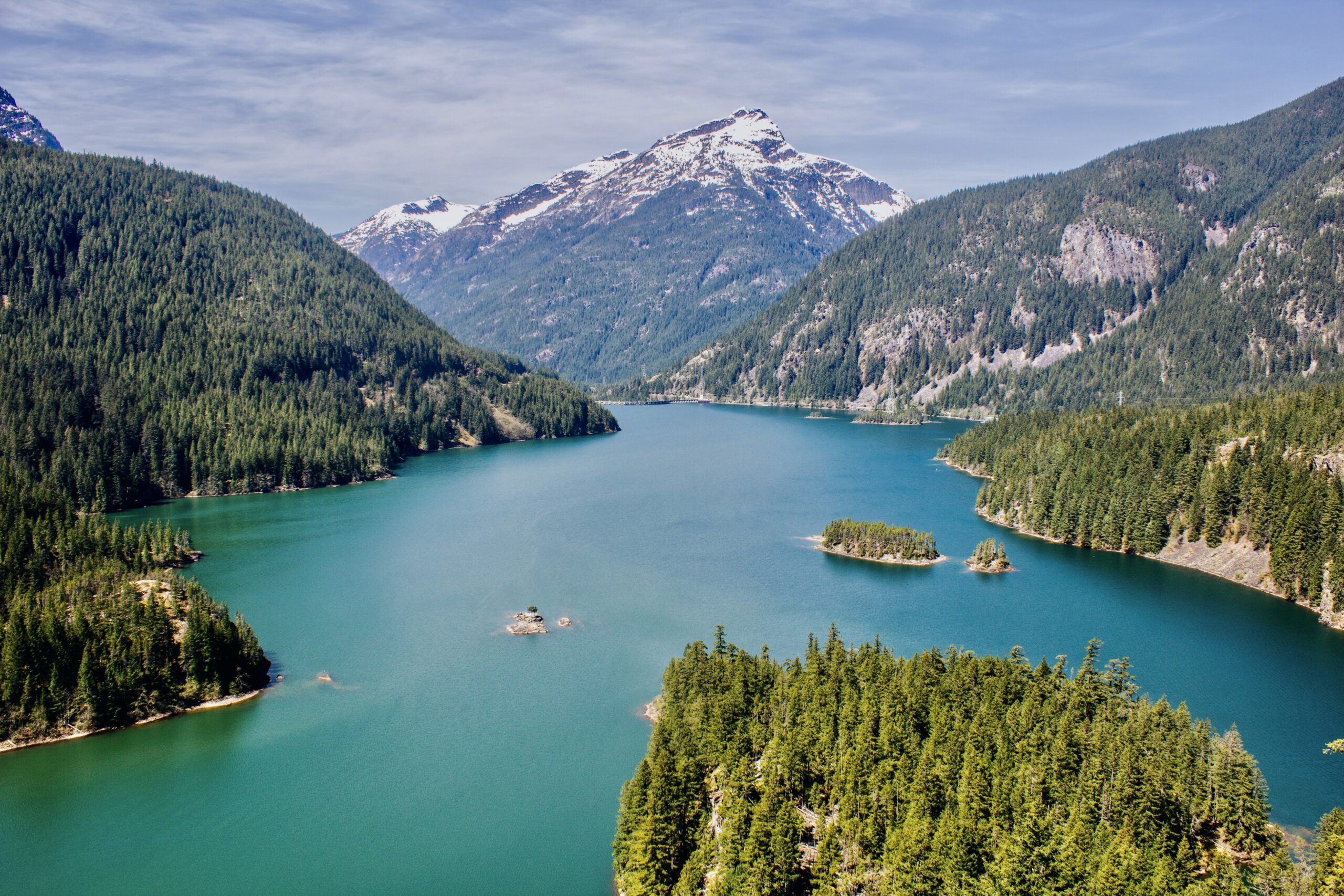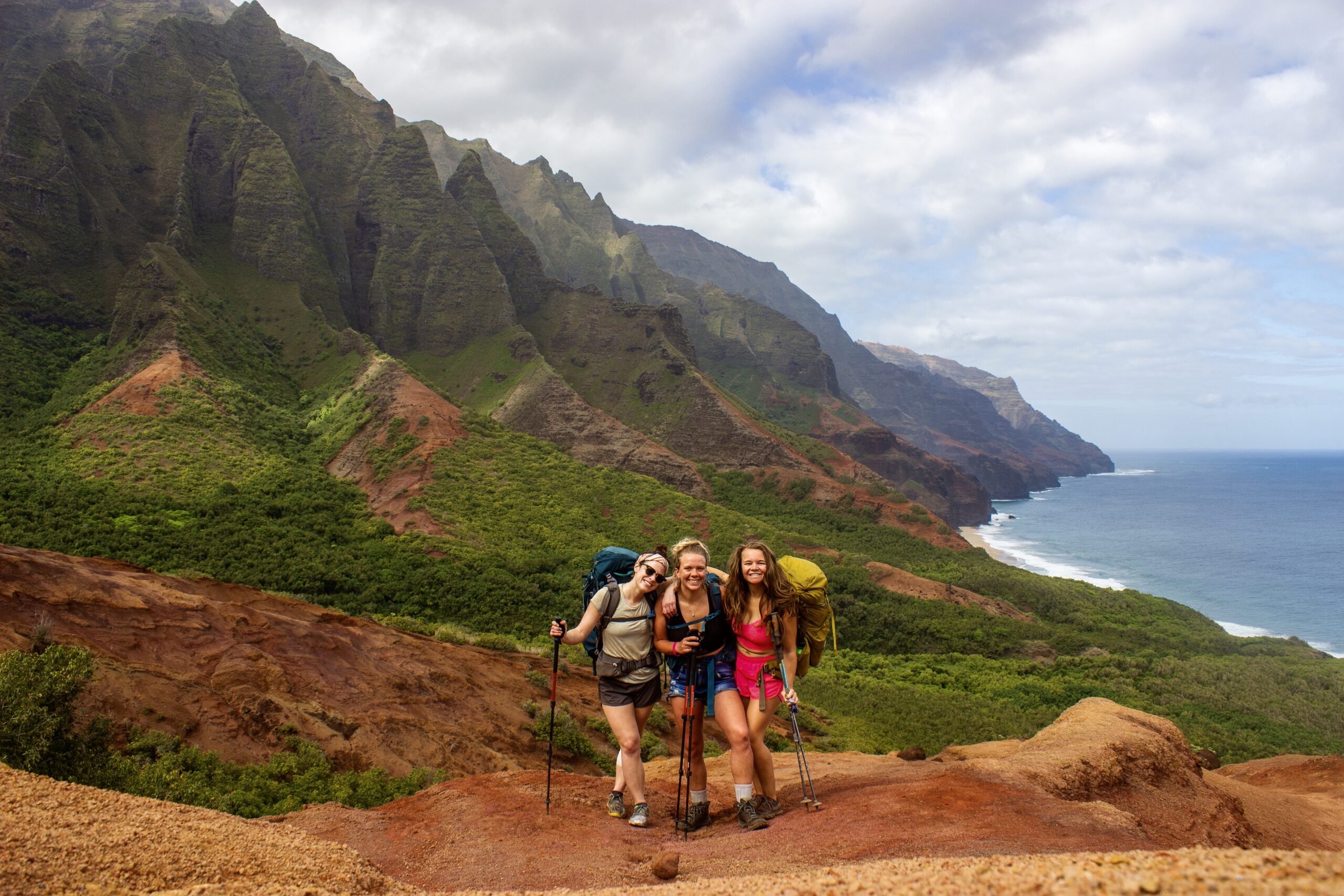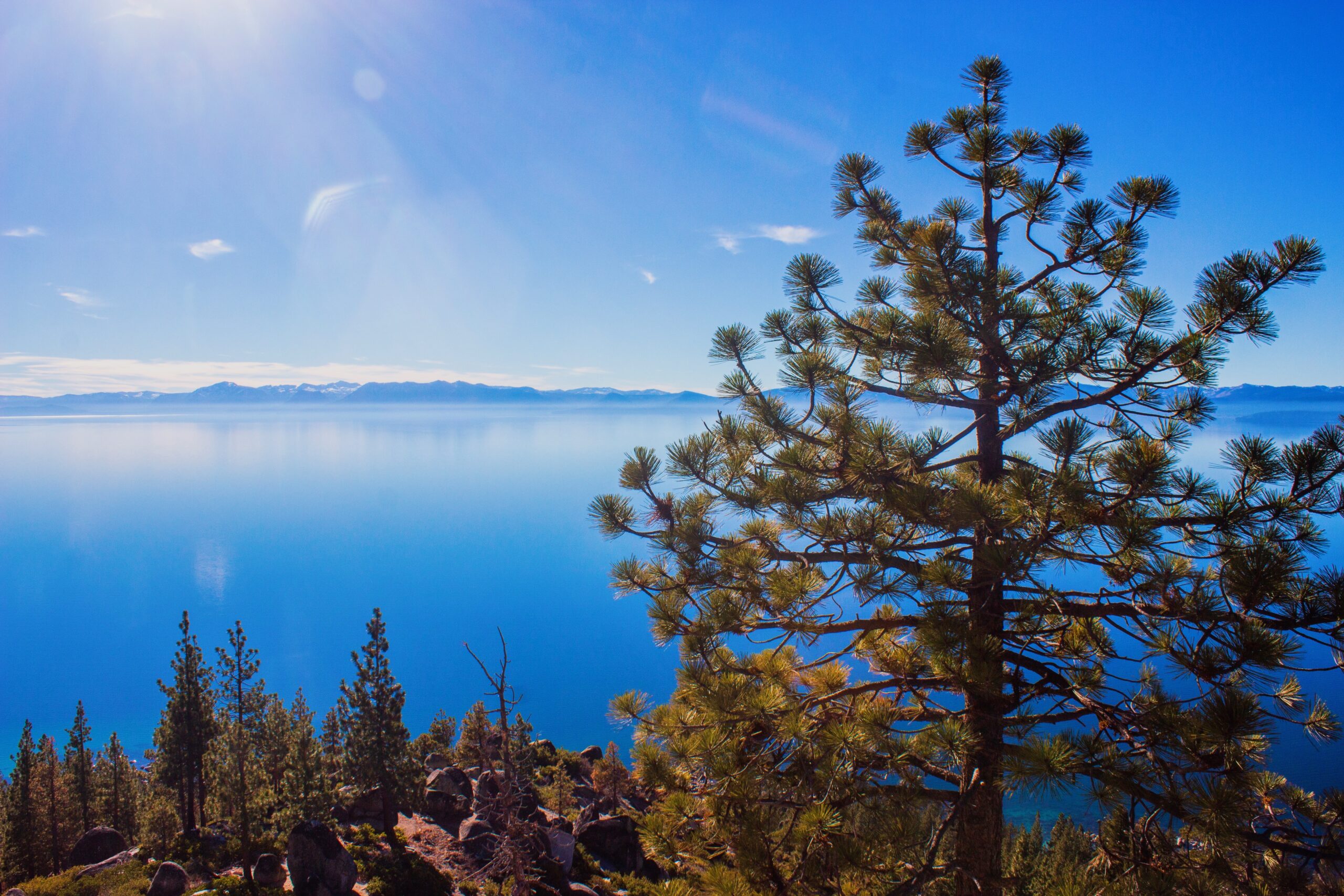The Ultimate 4 Day Yosemite Itinerary
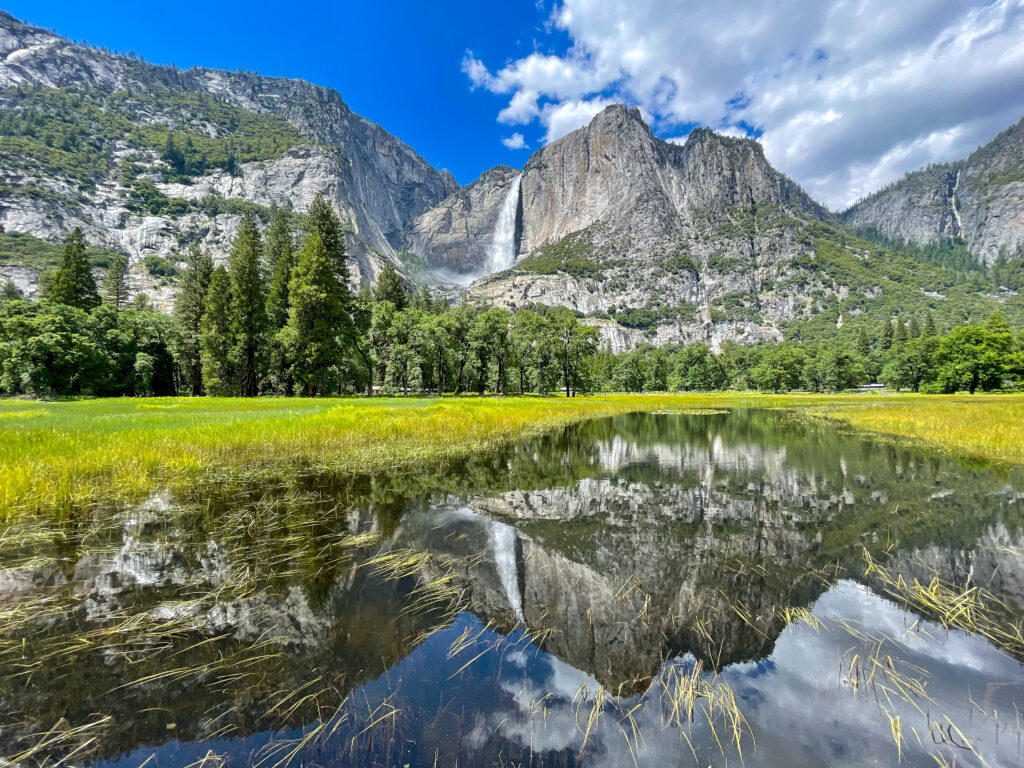
Steep granite walls, pristine alpine lakes, rushing waterfalls dropping over 2,000 feet, walks among old-growth trees, and swift-moving rivers. Yosemite National Park is a bucket list destination for anyone who visits California and one of the most popular national parks in the United States. It’s a hiker’s paradise, a photographer’s dream.
After spending over 6 years guiding and recreating in Yosemite National Park, I’ve explored far beyond the park highlights. Use this 4 Day Yosemite itinerary to plan the best trip you can imagine. Whether you’re an avid hiker, enjoy a gentle stroll through meadows, or appreciate long scenic drives, Yosemite National Park offers experiences for everyone.
How Many Days Do You Need in Yosemite?
I’ve found 4 days in Yosemite gives you plenty of time to explore the park without feeling rushed. You can pack a lot into a 4 day Yosemite itinerary while allowing for some downtime to relax. With 4 days in Yosemite, you’ll have enough time to explore the park highlights and beyond.
It’s definitely possible to plan 3 days in Yosemite but if you want to fit in this whole itinerary you might feel a bit rushed.
If you’re only planning to spend 2 days in Yosemite you’ll have to cut out some highlights. Spend a day exploring Yosemite Valley and choose between Tioga Pass or Glacier Point and the Giant Sequoias on your second day.
If you have the time I’d also recommend adding a road trip to Mammoth Lakes or a road trip from Yosemite to Lake Tahoe!
Is Yosemite Open Year Round?
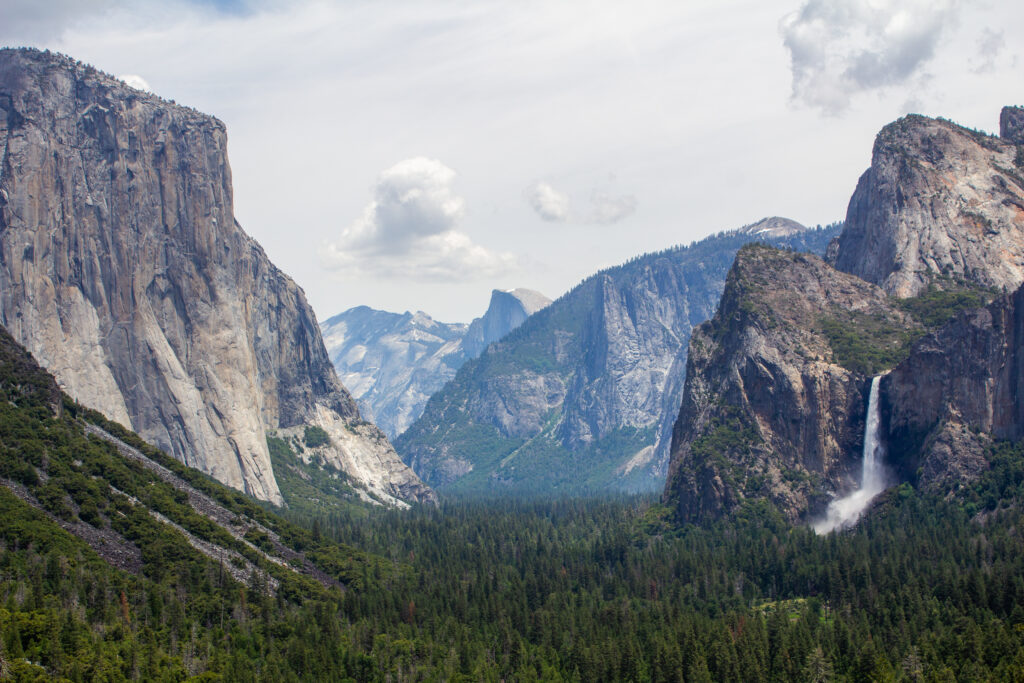
Yosemite Valley is open 24 hours a day, 7 days a week weather permitting. Yosemite Valley closes due to weather conditions such as extreme snowfall, flooding, and wind storms.
The higher elevations in the park, including Tioga Pass Road and Glacier Point Road, are open when clear of snow. The roads are usually open from late May to early July and close from mid-October to late November. Check out the most up-to-date road closures here.
**Because of the above-average snowpack from the 2022 – 2023 winter, it is predicted that Tioga Pass Road and Glacier Point Road will open in late June to early July.
Yosemite National Park Entrance Fee
The entrance fee into Yosemite National Park costs $35 per car for a 7-day pass.
If you plan to visit multiple national parks within a year, I’d recommend checking out the America the Beautiful Pass. It’s only $80 a year and includes access to all US national parks, recreation areas, forests, national monuments, and more.
Yosemite National Park Weather
The weather in Yosemite National Park varies by season and elevation. With the valley lying at 4,000 feet and the highest point in Yosemite rising over 13,000 feet, you can imagine the weather throughout the park differs. Yosemite is stunning year-round however, understanding the weather in each season is important in planning your trip.
Spring
Waterfall season! The highest flow rates of Yosemite’s waterfalls are in the spring. As temperatures rise and snow melts throughout high elevations in the park, the valley waterfalls start rushing.
During spring Yosemite Valley is open however, high park roads like Tioga Pass and Glacier Point are closed for the season. They usually open in the late spring to early summer. When visiting in the spring, plan to explore the valley with the chance of encountering snow on hikes that rise out of the valley.
Spring is less crowded than the summer season so visit before Memorial Day when the park is a bit less crowded.
Summer
Wildflowers! Summer is the most crowded time of year to visit Yosemite however, the park is most accessible in the summer. Temperatures in the valley reach over 90 degrees Fahrenheit during the day. If you head up to the high country expect slightly cooler temperatures, great for hiking.
Wildflowers bloom throughout the park all summer and it’s a great time of year to take a dip in an alpine lake or in the gentle flowing sections of the Merced River.
Fall

Fall is known for its cooler temperatures and autumn leaves. The valley trees turn yellow, a beautiful contrast to the dark gray granite walls. Fall is a great time to hike in Yosemite. Expect lower river and waterfall flow in the fall.
All roads in the park remain open in the fall until snow begins to settle in the high country. When enough snow accumulates Tioga Pass Road and Glacier Point Road close. This usually occurs between late October to early November.
Winter
Winter is the least crowded time of year to visit Yosemite National Park. Most of the park closes in the winter as deep snow accumulates in the high country. The valley stays open year-round, weather permitting. Heavy snowfall, winds, and flooding occasionally close the valley in the winter.
4 Day Yosemite Itinerary
So if you’re wondering how to spend 4 days in Yosemite then this is the ultimate guide for planning your trip. From Yosemite Valley to the high country to the Giant Sequoias to Hetch Hetchy, you will not be disappointed.
Day 1: Hetch Hetchy and Yosemite Valley
On day 1, head to Yosemite early to make the most of your day and avoid the crowds. If coming from the Bay Area, take Highway 120, the northwest entrance into Yosemite.
Day 1 is the best day to add a stop at Hetch Hetchy. It’s one of the least visited sections of Yosemite and is only accessible off Highway 120. It’s a large reservoir filled from the Tuolumne River starting in Yosemite’s high country. Hetch Hetchy looks quite different compared to the rest of Yosemite, making it a unique stop.
After stopping by Hetch Hetchy, continue your drive down to Yosemite Valley to spend the afternoon and evening exploring. It’s about an hour and 15-minute drive from Hetch Hetchy to the valley floor.
Explore Hetch Hetchy Reservoir and Dam
The Hetch Hetchy Reservoir is a rather interesting and controversial part of the park. Prior to 1923 when the Hetch Hetchy dam was built the area was a large valley, similar to Yosemite Valley. Today it is altered by a large hydroelectric dam. Learn about the park’s history, check out the dam, or hike to a waterfall here.
Note Hetch Hetchy is located at 3,900 feet. It gets very hot here during the middle of the day during the summer. It’s open year-round, weather permitting, during daylight hours.
Wapama Falls
5 miles out & back, 1100 foot gain
If you’re ready to hike, then check out Wapama Falls Trail. This 5-mile out & back hike follows the north side of the Hetch Hetchy Reservoir until it reaches Wapama Falls. Wapama Falls drops 1,080 feet into the reservoir.
In the early season, stand on the bridge under the falls for a chance to see rainbows and to get sprayed by the mist.
Snap an Iconic Photo at Tunnel View
Viewpoint
Continuing down into the valley, Tunnel View is one of the first viewpoints you should check out. Tunnel View is the most iconic viewpoint in all of Yosemite National Park.
From Tunnel View you can see the two most famous rock formations, Half Dome and El Capitan towering high above the densely forested valley floor. Clouds Rest, almost 10,000 feet tall, pokes up high above Half Dome. From the early spring through summer, Bridalveil Falls rush down to the valley floor.
Tunnel View has handicap, bus, and large vehicle access and is a great way to start on your 4 day Yosemite itinerary. When entering the valley from the west entrances of Highway 41, 120, or 140 it’s easy to stop at Tunnel View before winding down into the Valley.
After Tunnel View head down to the valley floor where there are countless opportunities for exploration. Check out some of these valley options.
Stand at the Base of Lower Yosemite Falls
Flat except slight incline at the end, handicap-accessible
Yosemite Falls are the tallest waterfall in North America dropping 2,425. There’s nothing as impressive as standing at the base of the falls! It’s a short paved walk out to the bottom of Lower Yosemite Falls. Feel the mist as you stand below them.
Expect maximum flows in the late spring to early summer as snowmelt is high in the park. Unfortunately, by late summer and early fall, Yosemite Falls becomes a small trickle to nothing depending on the year. Luckily with such a high snowfall this past 2022 – 2023 season, a strong flow should continue well into the season!
Dine at the Pizza Deck in Curry Village
The Pizza Deck is by far my favorite place to eat in all of Yosemite. There’s nothing better than pizza under the towering granite walls as the sunsets and illuminates Half Dome.
Not only that but the Pizza Deck also has gluten-free and vegan pizza options! And if pizza isn’t really you’re thing, there’s a dining hall right next store with a variety of dining options.
Curry Village also has a store selling gifts and essential groceries.
Hang Out at the Ahwahnee Hotel
The Ahwahnee Hotel is Yosemite’s historic landmark hotel. Floor-to-ceiling windows facing out at Half Dome, spacious dining ballrooms with elaborate chandeliers, and large fireplaces make this the nicest hotel in Yosemite.
It’s where the presidents and famous have stayed. Book a few nights at the Ahwahnee Hotel to celebrate a special occasion or make reservations for dinner.
Or if you want a chill Ahwahnee experience, grab lunch and a cocktail and sit out in the courtyard taking in the stunning views of Yosemite National Park.
Eat, Shop, and Learn in Yosemite Village
Yosemite Village is home to the Yosemite National Park Service visitor center, museum, largest park gift shop, food eateries, and the Ansel Adams Museum.
Check out the visitor museum to learn about park history, geology, wildlife, and more. There are also films in the Yosemite theatre behind the visitor center that run every half hour.
The park museum has artifacts from the Awhwahnee Native Americans. Pieces of art make up this gallery. It’s a beautiful museum to check out.
The Ansel Adams Museum features the photography of famous national park photographer Ansel Adams as well as other famous Yosemite photographers and artists.
The store in Yosemite Village doubles as a gift shop and the village grocery store. And surprisingly, the price of produce, food, and alcohol isn’t bad! So if you’re planning g a picnic while spending 4 days in Yosemite you can count on the village store for just about anything you need!
Watch the Rock Climbers from El Cap Meadows
Yosemite is known as a rock climbing mecca and watching the climbers on El Capitan is nothing short of impressive. The giant monolith rises over 3,000 feet above the valley floor.
From early spring to late fall pack a pair of binoculars to search for the tiny climbers as they scale the famous granite walls. It’s always fun standing in El Cap Meadows and chatting with fellow climbers and on-lookers while admiring the strength and determination that goes into climbing this impressive rock.
It’s especially fun to hang out in El Cap Meadows at night. Climbers sleep on portal ledges on the wall so at night you can see their headlamps lighting up the walls. Also, the dark-lit night sky is free of light pollution and one of the best places to enjoy the starry skies in Yosemite.
Day 2: Glacier Point & Mariposa Grove of Giant Sequoias
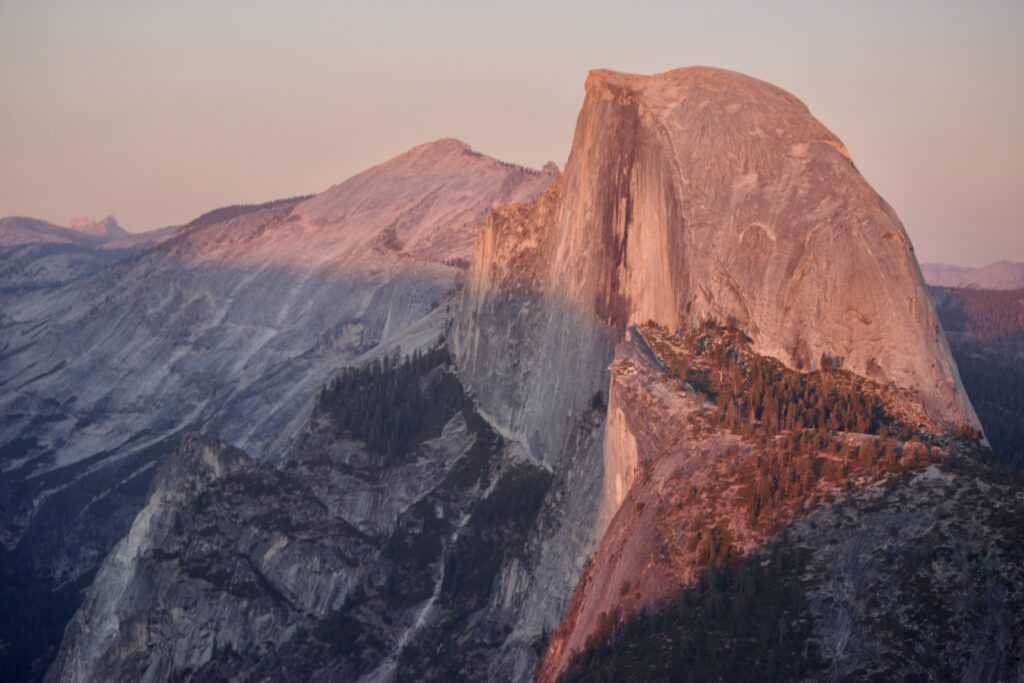
Spend your second day in Yosemite checking out the southern part of Yosemite by visiting Glacier Point & Mariposa Grove of Giant Sequoias; two highlights in Yosemite National Park. To avoid the crowds it’s best to start this day early!
Snap Photos at Glacier Point
Glacier Point offers one of the most expansive viewpoints in Yosemite National Park. You can almost see a third of the park from there! From the high jagged peaks down to the valley floor, there’s not a better easily accessible birds-eye viewpoint in Yosemite.
Glacier Point is a paved viewpoint, handicap accessible. It has signs explaining park geology and history.
Glacier Point is about an hour and a half drive from Yosemite Valley. It gets busy up there so leave early to beat the crowds. Alternatively, visit Glacier Point in the evening for sunset. Sometimes it’s still crowded but after sunset the crowds thin out and if you stay long enough, the stars from Glacier Point are unbelievable.
**For the summer of 2023 the National Park Service is working on a two-year project to repair Glacier Point Road. Plan for a half-hour delay on your drive in and out of Glacier Point.
Walk Amongst the Giant Sequoias in Mariposa Grove
Mariposa Grove of Giant Sequoias is the largest sequoia grove in Yosemite. The giant sequoias grow to be the largest trees on the planet in terms of their cubic volume.
Walking among them is beyond impressive. You’ll feel tiny as these massive trees tower above you. The largest tree in Yosemite, the Grizzly Giant, is likely between 2000 to 3000 years old. Its circumference at ground level is almost 100 feet and it rises over 200 feet tall.
When visiting Mariposa Grove of Giant Sequoias, you have a few trail options. The Big Trees Loop is an easy path on boardwalks and paved trails. It’s only 0.3 miles and suitable for all visitors. You’ll see some of the highlights of Mariposa Grove.
If you want to see the Grizzly Giant, the California Tunnel Tree, and other famously large sequoias, hike the 2-mile Grizzly Giant Loop Trail. This moderate trail is worth the effort and it’s the densest population of old-growth sequoias in all of Yosemite.
Hike the Four Mile Trail
9.7 miles. out & back, 3400 foot gain
If you’re looking to challenge yourself, the Four Mile Trail runs from the Yosemite Valley floor up to Glacier Point. The hike offers impressive views of El Cap, Half Dome, and the valley as you rise up.
Like any hike out of the valley, it’s steep as you ascend the trail that switchbacks up the granite walls but the views are worth it.
It’s also common to hike up to Glacier Point or down to the valley from Glacier Point and have friends or family pick you up so you only have to hike one way.
Day 3: Tioga Pass – Yosemite High Country
I find it crazy but people who visit Yosemite never leave the valley. Therefore, that’s all the greater reason why you HAVE to add Yosemite’s High Country to your 4 day Yosemite itinerary.
Avoid the crowds and see the vast and varying landscapes of Yosemite while exploring the high country off of Tioga Pass Road. Tioga Pass is actually the highest mountain pass in California reaching 9,943 feet at its highest point. There’s no doubt you’ll feel short of breath at an altitude this high! But the sites and striking landscapes make this day unforgettable.
Rising out of the valley you’ll drive through the dense forests of the montane environment before you reach the alpine where vegetation is sparse but views are expansive. Alpine meadows and round granite domes and peaks fill the landscape.
Tioga Pass is filled with many can’t miss sites and hikes!
Snap Photos at Olmsted Point
Olmsted Point is the most expansive viewpoint along Tioga Pass Road. Sitting north of Clouds Rest and Half Dome you’ll have completely different views of the two prominent rock features.
Olmsted Point also features unique glacial geology. Sprawled across the landscape are large boulders on the slabby granite. These boulders are known as glacial erratics. As the glaciers melted they were left behind and carved the landscape.
Go for a Swim in Tenaya Lake
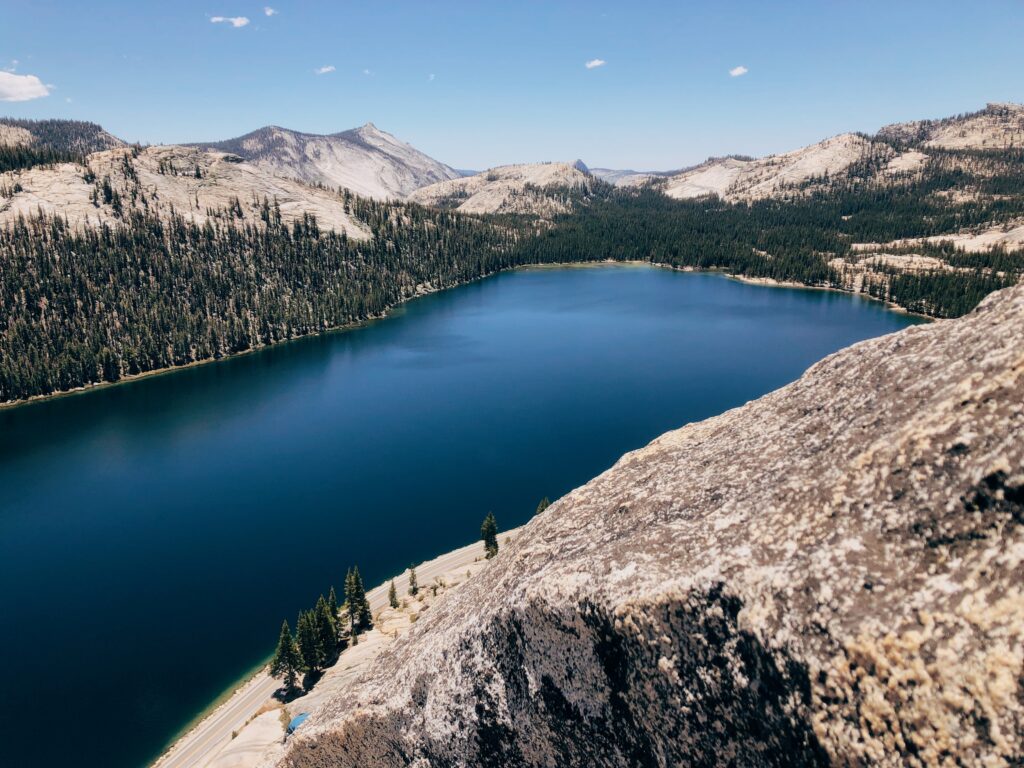
Tenaya Lake is the largest alpine lake in all of Yosemite and during the summer it’s the perfect spot to take a dip! Parking is available off of Tioga Pass Road along the north side of the lake. Sandy beaches line the shores when water levels are low enough.
There’s also a large beach on the east side of Tenaya Lake. There is a large parking lot at this beach with bathrooms. This beach is a great picnic spot!
Stroll Through Tuolumne Meadows
Tuolumne Meadows is a large alpine meadow located right off Tioga Pass Road. Park and explore the visitor center or go on a walk in the meadows. Walk out to Soda Springs and taste some bubbling mineral water.
Watch for trout in the Tuolumne River, one of the two large rivers in Yosemite. Take in the views of the surrounding domes – Pothole Dome and Lembert Dome as well as the distant peaks – Cathedral Peak and Tuolumne Peak.
Check Out the Mono Lake Tufas and Lee Vining
If you make your way all the way over Tioga Pass and down to the east side of the Sierra, you’ll be greeted with sites of Mono Lake. Mono Lake is a large alpine saline lake, famously known for its unique rock formations, the tufas. These tufas are limestone rocks made of calcium carbonate and rise out of the waters.
Check out Mono Lake South Tufa Area for the most impressive lake and tufa views. After grab some food in the cute town of Lee Vining! Check out the famous 395 Mobil Gas Station for large, tasty meals and for all the gift shop souvenirs you can imagine.
While you’re at it, add Mammoth Lakes to your Yosemite itinerary. Yosemite to Mammoth Lakes is only about an hour’s drive and Mammoth is home to beautiful Eastern Sierra hikes!
Day 4: Yosemite Valley
On the last day of your 4 day Yosemite itinerary, I’d recommend checking out anything you missed in the valley. If you didn’t have time for a long hike on your first day, add it to your last! Otherwise, wander through the meadows, relax by the Merced, or hit up the Yosemite Village Gift Shop.
Hike to the top of Upper Yosemite Falls
6.6 miles out & back, 3250 foot gain
If you’re an avid hiker looking for a fun challenge then spend the day hiking to the top of Upper Yosemite Falls. Start this hike as early as possible to avoid the crowds. For this reason, I’d recommend starting this hike early on day 4 as an alternative option.
The climb to the top of Yosemite Falls takes a few hours one way. Carry a couple of liters of water and a filter to filter your water at the top. The trail is steep and slick in many areas. The trail is well polished so careful footing is essential. Trekking poles and sturdy hiking boots are essential.
From the top of Upper Yosemite Falls, you’ll stand over 3000 feet above the valley floor. Trees, meadows, and rocky peaks fill the landscape while the roaring falls flow down into the valley.
Hike the Mist Trail to Vernal and Nevada Falls
6.4 miles round trip, 2200 foot gain (top of Nevada Falls and back)
Another great hiking option is the Mist Trail. And as you can imagine, it’s called the Mist Trail for a reason. Pack your rain jacket or prepare to get soaked as you hike up past Vernal and Nevada Falls. These are two of the most popular falls in Yosemite.
There are a few options for hiking the Mist Trail. From the trailhead to the base of Vernal Falls the trail is paved. I’ve seen both strollers and wheelchairs in this section however, it is pretty steep in some areas so take caution. This is the easiest part of the trail.
From there you can turn back or you can continue up to the top of Vernal Falls and on to the top of Nevada Falls. This whole section is made up of steep blocky slippery stairs. The views along the way are stunning but watch your footing!
From the top of Nevada Falls, I’d highly recommend taking the John Muir Trail down. This turns the trail into a loop with switchbacks and avoids the steep narrow steps and crowds. It’s a much easier descent on the knees and offers more impressive views of the falls from a distance.
Where to stay in Yosemite National Park?
Both camping and lodging options are available in and nearby Yosemite National Park. Staying in the park is a great option to avoid the driving time in, however, you must book in advance as places sell out quickly.
There are also camping and lodging accommodations outside of the park. They are usually a bit cheaper than in the park and there are a greater variety of options.
Lodging in Yosemite
There are a few accommodations in Yosemite. The Ahwahnee Hotel is the most luxurious accommodation experience. Yosemite Valley Lodge is comfortable and sits right next to the meadows and Yosemite Falls. The Curry Village Cabins are simple and cheaper than other park accommodations.
Camping in Yosemite
If you want to camp in the valley, check out the Upper Pines, Lower Pines, and North Pines campgrounds. They are located along the Merced River in Yosemite Valley.
Make reservations early as they book up quickly. Reservations go up as early as 5 months in advance and sell out quickly.
Lodging Outside of Yosemite
Camping Outside of Yosemite
Shuttle system
4 Day Yosemite Itinerary Packing List
Packing the right clothing is essential to having a good time. This is a great packing list for a 4 day Yosemite itinerary.
- Clothing layers – puffy jacket, rain jacket, warm base layer
- Comfortable hiking boots or trail runners
- Quick-drying hiking pants
- Sun hoodie
- Gloves
- Sun hat
- Warm hat
- Sunglasses
- Sunblock
- Headlamp
- Day hiking backpack
- Road maps – downloaded offline & paper
- First aid kit
- Snacks
- Water
- Water filter
